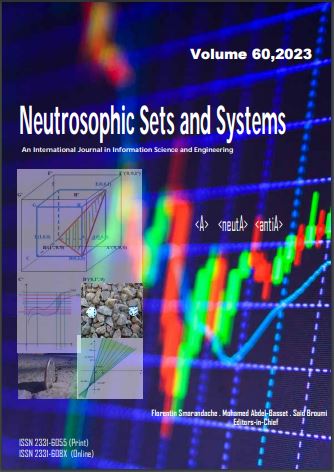Study of the Circular Economy Model as a Strategy for the Development of Peru Based on Neutrosophic Cognitive Maps
Keywords:
Circular Economy, Sustainable Development, Neutrosophic Cognitive Maps, Neutrosophic NumberAbstract
The circular economy has become a crucial approach to address the environmental and economic challenges associated
with sustainable production and consumption. Instead of the traditional linear model of "take, make, use, and dispose of", the
circular economy seeks to close material and resource cycles, minimize waste and maximize added value throughout the supply
chain. In this context, the different strata of the Peruvian economy play an important role in the transition toward a circular
economy. However, several indicators have been identified that show poor performance in this form of development. The pur
pose of this study is to identify the opportunities for the implementation of the circular economy model in the Peruvian economy.
The investigation results provide a comprehensive vision of the pitfalls and congruences for implementing this strategy. Neutro
sophic cognitive maps were selected as a study tool, which represents relationships between concepts; in this case, indeterminacy
is also included to represent unknown, neutral, imprecise relationships, etc. between concepts. To design the dynamic neutro
sophic cognitive map, 14 circular economy specialists were surveyed, based on their individual and independent criteria and so
the model was obtained. Then, from the run of all the possible cases according to the algorithm of seeking the hidden patterns,
the absolute and relative frequencies for the convergence to each one of the possible values were obtained.
Downloads
Downloads
Published
Issue
Section
License
Copyright (c) 2023 Neutrosophic Sets and Systems

This work is licensed under a Creative Commons Attribution-NonCommercial-ShareAlike 4.0 International License.







